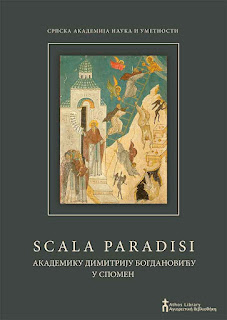Keywords: Serbian Orthodox Church, Hilandar, serbian monasteries, female monasticism, pisaniya, the Bay of Kotor, Herzegovina, Lika, Krbava, 17th–18th century
Λέξεις κλειδιά: Σερβική Ορθόδοξη Εκκλησία, Χιλανδάρι, σερβικές μονές, γυναικείος μοναχισμός, δωρεές, Ακτή του Κότορ, Ερζεγοβίνη, 17ος αι. 18ος αι.
Summary
During the era of Turkish rule in Serbian lands, the term "pisaniya" was used to describe particular customary activities of christian-orthodox monks, who were traveling from region to region, visiting pious christians, collecting donations for their monasteries and recording the results of their visitations in special books. One of such books is Katastich No. 521, a manuscript used by monks of the serbian monastery of Hilandar at Mount Athos for recording the names of contributors and types of contributions collected trough pisaniya, in the period between 1694 and 1704 in the regions of Herzegovina, Lika and Krbava. The creation of this manuscript coincides with the major war conflict, the Great Turkish War (1683–1699) and immediate post-war period. The culmination of military operations in central serbian lands (1688–1690) was marked by the destruction and devastation of enormous proportions, with far reaching consequences Therefore, the monks of Hilandar had to restrict their visitations mainly to semi-liberated regions of Herzegovina, the Bay of Kotor (under the Venetian control), Lika and Krbava (under the Habsburg control). During their travels, they visited many places and monasteries. Hence, Katastih No. 521 contains a great number of data important for historical geography, demography and church history, including data on monastic fraternities, female monasticism, and local serbian leaders. Data recorded in Katastich provide an important insight into the state of Serbian people and the Eastern Orthodox Church at the time of the Great Turkish War (1683–1699).

